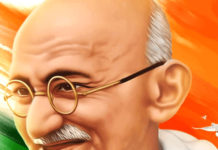The Origin and Evolution of Telescope
The Origin and Evolution of Telescope
The Origin and Evolution of Telescope
A telescope is an optical instrument that is designed to gather and focus light from distant objects. The main function of a telescope is to make faraway objects appear closer and clearer than they would appear to the naked eye. Telescopes come in different shapes and sizes, but they all have two basic components: an objective lens or mirror that gathers the light, and an eyepiece or camera that magnifies the image.
Telescopes can be used for a variety of purposes, including astronomy, birdwatching, surveillance, and even hunting. In astronomy, telescopes are used to observe and study celestial objects such as stars, planets, galaxies, and nebulae. There are different types of telescopes, including refracting telescopes, reflecting telescopes, and catadioptric telescopes, each with its own advantages and disadvantages.
In this essay, we will explore the origin and evolution of the telescope, from its earliest beginnings to its modern-day applications.
The history of the telescope can be traced back to the early 17th century, when two men, Hans Lippershey and Zacharias Janssen, are said to have independently invented the device. They were both Dutch spectacle-makers, and it is believed that they used their knowledge of lenses to create a device that could magnify distant objects. In 1608, they presented their invention to the States General of the Netherlands, who were impressed by its potential and granted them a patent.
The first telescopes were relatively simple devices, consisting of a convex objective lens and a concave eyepiece. They were often only a few inches long, and their magnification was limited to a few times the naked eye. Nevertheless, they were a vast improvement over the naked eye, and they soon caught the attention of astronomers.
One of the first astronomers to use a telescope was Galileo Galilei. In 1609, he heard about the device and set about building his own. He quickly discovered that the telescope allowed him to see things that were invisible to the naked eye, such as the moons of Jupiter and the phases of Venus. These observations challenged the prevailing view of the cosmos, which held that the Earth was at the center of the universe. Galileo’s discoveries provided evidence for the heliocentric model of the solar system, which placed the Sun at the center and the Earth and other planets in orbit around it.
Over the next few decades, the telescope underwent a number of improvements. Astronomers began to experiment with different lens shapes and sizes, as well as different materials for the lenses. They also discovered that adding a second convex lens to the device could increase its magnification even further. These improvements allowed astronomers to see even more distant and faint objects in the night sky.
In the 18th and 19th centuries, the telescope underwent another transformation. Telescope makers began to use mirrors instead of lenses to focus light. This led to the development of the reflecting telescope, which had a much larger aperture than the refracting telescope and could gather more light. Reflecting telescopes also eliminated the problem of chromatic aberration, which had plagued refracting telescopes. The most famous example of a reflecting telescope is the Hubble Space Telescope, which was launched into orbit in 1990.
Today, the telescope is used for a wide range of applications, from astronomical research to surveillance and military reconnaissance. The development of digital imaging technology has allowed astronomers to capture images of distant objects with unprecedented clarity and detail. Telescopes have also been used to study the properties of exoplanets, which are planets outside our solar system. In recent years, the discovery of numerous exoplanets has sparked renewed interest in the search for extraterrestrial life.
In conclusion, the telescope has come a long way since its humble beginnings in the early 17th century. From a simple device that could magnify distant objects a few times, it has evolved into a powerful tool that can reveal the secrets of the cosmos. The telescope has revolutionized our understanding of the universe and has provided us with a window into the mysteries of space. Its continued development and use promise to reveal even more of the universe’s secrets in the years to come. 0 0 0.
The Origin and Evolution of Telescope
Sources: The Origin and Evolution of Telescope
A Short History of the Telescope
The Evolution of the Telescope ***
The Origin and Evolution of Telescope
You May Like:
N.B. The article ‘The Origin and Evolution of Telescope’ originally belongs to the book ‘Essays on Science And Technology‘ by Menonim Menonimus.
The Origin and Evolution of Telescope
Books of Composition by M. Menonimus:
- Advertisement Writing
- Amplification Writing
- Note Making
- Paragraph Writing
- Notice Writing
- Passage Comprehension
- The Art of Poster Writing
- The Art of Letter Writing
- Report Writing
- Story Writing
- Substance Writing
- School Essays Part-I
- School Essays Part-II
- School English Grammar Part-I
- School English Grammar Part-II..
Related Search:











